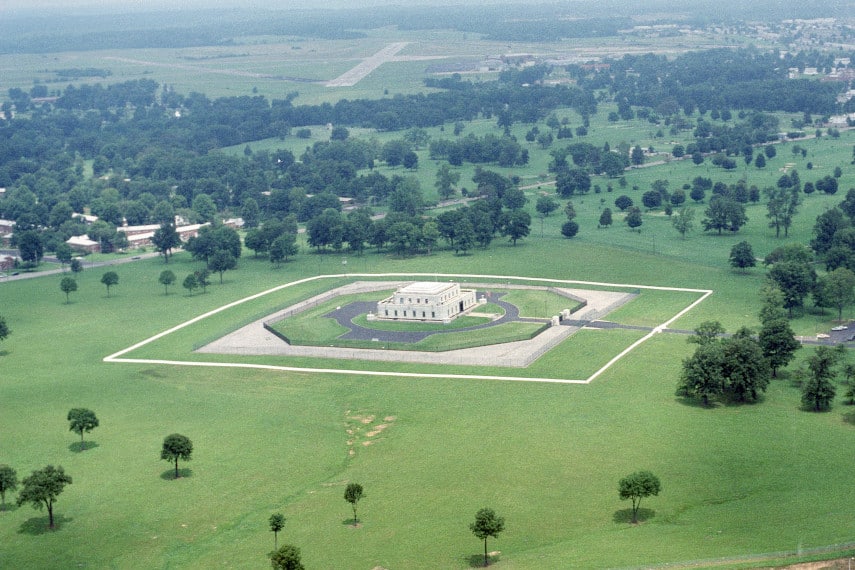Could Trump’s Tariffs Impact the Gold Price?
One of the key initiatives President Trump promised when he was elected was the implementation of tariffs on a wide variety of imports from numerous countries According to Trump, tariffs would, among...
Political

Gold has a long history as a store of wealth and a safe haven asset. At one point it served as the basis for the international gold standard, which enabled enormous economic growth in the 19th century.
While gold no longer underpins world currencies, countries around the world continue to hold gold as part of their official reserves. And no other country holds as much gold as the United States.
The United States’ government’s total gold holdings are 8,134 tonnes, or 261.5 million ounces. Most of that is held at the United States Bullion Depository at Fort Knox, around 147 million ounces.
Fort Knox itself has a reputation for security, with the phrase “as safe as Fort Knox” having become a popular phrase designating safety and security.
But in recent years an increasing number of people have questioned how safe the gold at Fort Knox is, or whether there even is any gold left at Fort Knox. And that has Elon Musk and his Department of Governmental Efficiency (DOGE) starting to ask some questions.
The United States Bullion Depository at Fort Knox was built in 1936 on land transferred to the Treasury Department from the US military installation at Fort Knox. It was initially used to store the massive amounts of gold held by the federal government after it seized bank-held gold in 1934.
It has been used since then to store not just gold, but other precious artifacts, particularly during World War II. But the Bullion Depository is still best known for storing gold.
What many people don’t know is that there hasn’t ever been a full-scale audit of the gold reserves at Fort Knox.
According to testimony provided to Congress by the Government Accountability Office (GAO) in 2011, GAO assisted with auditing 3 of 13 gold compartments at Fort Knox in 1974. After this initial audit, GAO recommended that the Secretary of the Treasury start performing cyclical inventories of the gold holdings at Fort Knox.
In a report of the Gold Commission to Congress in 1982, it was noted that the audits were performed on a cyclical basis due to the large amount of gold stored and the costs associated with those audits. In 1987, the Treasury Office of the Inspector General noted that the cyclical audits were intended to audit about 10% of the gold at Fort Knox annually.
By 1986, about 92 percent of the gold held at Fort Knox had been audited in these cyclical audits. After that time, these cyclical audits were canceled.
Additional audits have occurred since then, both in compartments previously audited and in compartments that were not audited. According to GAO, in order to ensure that audited gold remains secure:
“These officials also told us that over the course of the Treasury OIG’s audits of the Mint’s Custodial Schedules for fiscal years 1993 through 2008, the compartments containing the deep storage gold reserves not audited by either GAO or the committee, along with any previously sealed compartments that were opened, were selected and audited.
…
These officials also told us that once the inventory of a selected compartment being audited was completed, the compartment was sealed with an official joint seal to control the gold reserves contained in the compartment. According to Treasury OIG officials, opening and sealing compartments require the presence of three individuals–a representative of the facility where the gold reserves are held, a representative of the Director of the Mint, and a representative of the Treasury OIG. They also told us that, as of the end of fiscal year 2008, an inventory of each of the 42 compartments had been observed either by GAO, the Committee for Continuing Audits, or the Treasury OIG and that there has been no movement of deep storage gold reserves since that time. As such, in addition to considering internal control over financial reporting related to the Mint’s Custodial Schedules, Treasury OIG officials stated that the Treasury OIG’s audit procedures since fiscal year 2008 have primarily focused on inspecting the official joint seals each year for all 42 compartments to verify that they had not been compromised.”
For the average government bureaucrat, there is therefore nothing amiss. Procedures were put in place, those procedures were followed, and presumably the fact that seals were not compromised means that no one entered the vaults after the last audit.
But to many people outside Washington, questions remain. What if procedures weren’t actually followed?
What if some people went rogue, transferred the gold, and placed new seals on the compartments? What if gold were shifted around from compartment to compartment to satisfy audits?
Do some googling and you could probably fall down quite a few rabbit holes, with numerous skeptics out there, including people who believe there isn’t any gold at all at Fort Knox.
So why not prove the naysayers wrong and perform a full audit of Fort Knox?
After all, even if a full audit were expensive, can a country that runs $2 trillion annual deficits and that has a national debt of over $36 trillion really say that spending a few million dollars to audit Fort Knox’s gold isn’t really worth it?
If there were no gold at Fort Knox, what would it mean? After all, President Nixon severed the dollar’s last link with gold in 1971, so the gold serves no real purpose to our current monetary system.
Even though the gold is noted on the Federal Reserve’s balance sheet, valued at its official rate of $42.22 an ounce, it doesn’t actually circulate, nor do the gold certificates the Fed holds circulate as money.
If all the gold at Fort Knox were to disappear overnight, it would mean a loss of $11 billion on the Fed’s balance sheet, a drop in the bucket compared to the current balance sheet value of $6.8 trillion.
Of course, at current market prices the gold in Fort Knox is actually worth over $430 billion, so its loss would be significant in real monetary terms. More than anything, however, missing gold at Fort Knox would mean a hit to our national prestige.
Fort Knox is supposed to be an impregnable fortress keeping our gold reserves safe. If gold were to have been spirited away without the knowledge of the American people, it would be a major black mark for the government.
Gold has been an important safe haven asset and store of wealth for centuries. That’s why governments around the world continue to hold gold, and why many individuals buy gold during times of economic turmoil.
When economies falter and currencies crumble, gold provides a safe haven and store of value to see people through tough times. That remains the same today as it was in years past, with safe haven demand for gold remaining strong today.
The gold price has pushed to new all-time highs in recent months, and seems it could be poised to break through the $3,000 barrier, something that may have seemed unlikely a few years ago.
Many Americans have already taken steps to help safeguard their wealth with gold, taking advantage of rising gold prices to hedge against inflation and potential economic downturns.
Even if Fort Knox didn’t hold any gold, that wouldn’t be any reason for ordinary Americans not to hold gold. Governments have tried to sell their gold before, some with disastrous consequences, yet gold remains as popular today as ever.
If you’re looking to add gold to your assets, Goldco can help. With over $3 billion in precious metals placements and over 6,000 5-star reviews from our customers, we have worked hard to become one of the best gold companies in the country.
Call Goldco today to learn more about how you can put gold to use in helping safeguard your future.

